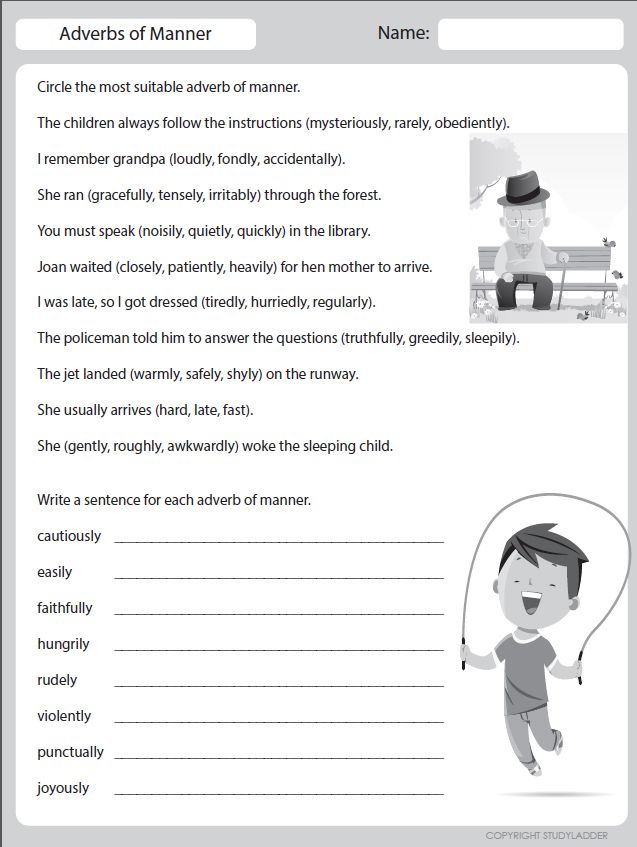Adverbs of Manner
- Grade: All grades
Activity type: Printable
To save results or sets tasks for your students you need to be logged in. Join Now, Free
Adverbs of Manner
- Course
English - Grade
n.a. - Section
Grammar Worksheets - Outcome
Grade 3 - Activity Type
Printable - Activity ID
33012

